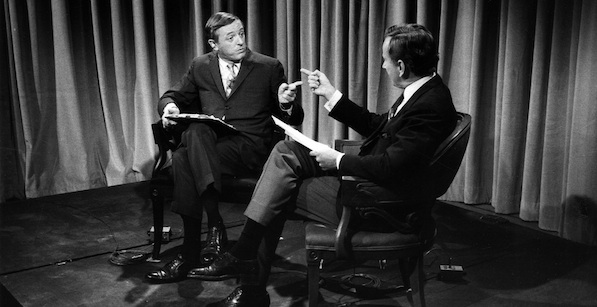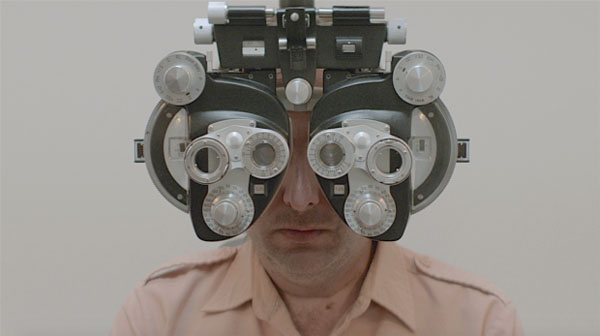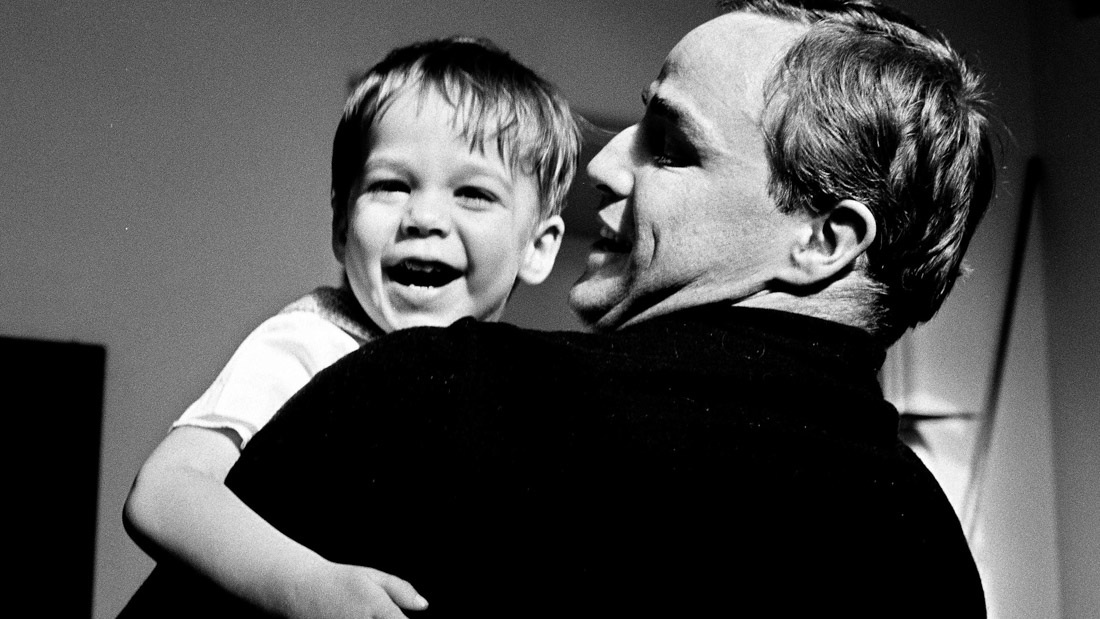By the time you read this, the Sundance Film Festival 2015 winners may have been announced and the biggest distribution deals will have been made. Condos will have been cleaned, beer bottles recycled, coats stowed and Neti pots returned to their shelves. Legions of on-call cabbies will reunite with the cubicles of their day jobs and Park City’s sidewalks will be breathing a sigh of relief. It’s time to wrap the U.S.’s most-talked-about film showcase from a personal point of view. But first, since we live in the age of data, I decided to do the math: Five days plus twelve films equals exhaustion—the happy kind. What I found in the films I saw at this year’s festival—a tiny selection of the festival’s total programming—were ideas being tested through comedy, tragedy and varying amounts of archival footage. What did we learn?

Hypothesis: Life was more interesting back then.
Proof: Robert Gordan and Morgan Neville’s The Best of Enemies revisits the 1968 ratings-busting debates between Gore Vidal and William F. Buckley, Jr., two patrician-accented stalwarts succumbing to the type of invective-laced mudwrestling we’ve become all too familiar with. The only difference: These two were actually entertaining, and they seemed to truly care. Witness Vidal, expatriated to Italy, licking his wounds in his basement re-watching the old tapes of the show (Sunset Boulevard–style) even as he continues to polemicize and Buckley, near his life’s end, breaking down when asked if he did, indeed, have regrets. Has intellectual life declined since? See also: Fox News. Even twenty years before today—the nineties—seems a time of great minds who read and reflected as opposed to quipped and carped: Donald Margulies’ screenplay for The End of the Tour could stand alone as a piece of theater as it revisits reporter David Lipsky and then-recently anointed icon David Foster Wallace’s mid-1990s road trip; and while the fumbling personae of writers are exaggerated by Segal and Eisenberg, the philosophical weight of their conversations would sink in a cup of contemporary coffee. All we have left is foam. And then there was Stanford Prison Experiment, whose glee in its re-enactment of the harrowing experiment made me wonder about its M.O.: Torture porn or public service? I experienced it as the former, which just means the experiment itself—Philip Zimbardo’s 1971 psychological study showing just about anyone can perpetrate crimes against humanity if they are given the right uniform—was even more brilliant. The best moment in the live audience Q&A were Zimbardo’s own answers, which revealed the care he took in deprogramming the participants as well as himself: he was still smarter than those choosing to make a case for the prescience of his work in the Abu-Ghraib era.

Hypothesis: If comedy = tragedy plus time, then tragedy = comedy minus time.
Proof: Actually, it took a good long while for Gregg Turkington’s Neil Hamburger to make it to the big screen as “The Comedian” but somehow this iteration, in Rick Alverson’s Entertainment, collapses time in the space of the deathless desert, where audiences don’t especially love to be heckled Hamburger style and there’s really not much to do or say except feel the desperate, poignant emptiness. This one stayed with me like a cherished bruise. On the other end of the spectrum, The D Train, a post-Bernie Jack Black-fueled comedy bromantically riffing on male-male sex-panic lets us sit in a few minutes of real audience discomfort before deciding that it’s safe to laugh. Comedy ties this film up in a safe knot, but it’s the awkward minutes of true suffering and pondering that were actually moving. There is no tragic downside in the Duplass-produced anthropomorphizing animation Animals, which had to be the funniest programming at Sundance, but let’s alter the equation to say comedy minus tragedy = time—and there’s no time like the present, where anything the Duplass family touches turns to gold. Mark Duplass lit up the post-screening conversation with a discussion of the ascendance of truly independent TV. But it was a brave turn from Sarah Silverman that most proves the original equation via I Smile Back: Lace a household drama with one of the era’s most brilliant comedian’s acerbic wit and backstory and you have gorgeously heart-wrenching story (including, of course, sex and drugs….) that was the best (and most humorous) dramatic work I saw. Tragedy = comedy minus time in this case means we are left in the moment of a mother’s crisis, which could seem absurd and funny and might be “material” in another life of hers. . .but not this one. Also to mention, in the opposite vein (but I won’t spoil it by saying much more): Joe Swanberg‘s well-crafted Digging for Fire, which opens a Pandora’s box of awful that transforms into something else.

Hypothesis: It doesn’t pay to streamline.
Proof: My overall favorite film of the festival, Listen to Me Marlon, allowed the actor to contain multitudes. Did he contradict himself? Occasionally, thankfully! The vivid audio recordings he made narrating his life, coaching and comforting himself and explaining his times and his various truths are the backbone of a crazyquilt time-skipping manifesto on one man, many complications and a world turned upside down multiple times over, with the bonus that nearly every image of Brando is infinitely watchable, from pulpy youth through to disintegrating old age. Fiction, as it turns out, often reduces complication in the service of story, and with the subject of Ramin Bahrani’s noirish 99 Homes, I could imagine a more interesting approach from messier documentary or-docu-looking-fiction, as a foreclosed-upon homeowner faces the opportunity of joining the dark side and managing the consequences. But as difficult-to-watch as I found the overlit flatness of the new-homes setting and central Florida landscape, I do believe this film, and its gnarly, rotted core, will grow on me with time. Ten Thousand Saints chose a promising eighties era to concentrate its powers of reflection on, but again overly simplified its history in the service of its narrative. The plot was convincing and the acting sturdy—Ethan Hawke’s dope-dealing dad wasn’t even the best of the many good performances—but there was more to the Tompkins Square rioting and the straight-edge scene than some of the stereotypes that greet the eye here, and the film feels less for it. One cure for the reductionist malady at this year’s festival came through Andrew Bujalski‘s deceptively simple Results, which has been called a more “mainstream” effort from the director—maybe because it offered more star power, fitter bodies and some color in a contemporary story of personal trainers at odds over a new client (among other things)–but which continues Bujalski-the-auteur’s faux-naive style, surfacing memorable surprises in editing, audio and plot. And surprises (welcome and not) are what Sundance promises and year after year somehow manages—in fits and spurts—to deliver.




